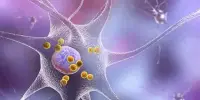Photo-oxidation therapy is a sort of cancer treatment that destroys cancer cells by using light and photosensitizing chemicals. Photodynamic treatment (PDT) is another name for it. For many years, PDT has been utilized as a less invasive therapy option for a variety of cancers, including skin cancer, lung cancer, and esophageal cancer. However, continuous research is being conducted in order to enhance and improve this therapy.
A City University of Hong Kong (CityU)-led research team has made a significant breakthrough by developing a novel class of near-infrared-activated photo-oxidants that may effectively kill cancer cells without the need for oxygen. Photo-oxidants cause a distinct type of cancer cell death, which can overcome cancer cell resistance. The findings offer a new strategy, called ‘photo-oxidation therapy’, and provide a promising direction for the development of anti-cancer drugs.
Photodynamic therapy, a novel cancer treatment method, employs photosensitizers to produce reactive oxygen species (ROSs) that, when exposed to light, preferentially kill cancer cells. However, most present photodynamic therapies rely on the availability of oxygen, and solid cancer tumors frequently have a hypoxic microenvironment with very low oxygen levels, limiting this approach’s therapeutic efficacy.
Intriguingly, we found that the ‘death mode’ of cancer cells induced by the Pt(IV) photo-oxidants differs from that of any other anticancer agents. A unique mode of cancer cell destruction was initiated through the dual-action effect of strong intracellular oxidative stress and reduced intracellular pH value.
Professor Zhu
To address this limitation, a research team led by Professor Zhu Guangyu, in the Department of Chemistry, and Professor He Mingliang, in the Department of Biomedical Sciences (BMS) at CityU, discovered an effect called “metal-enhanced photo-oxidation.” By conjugating metals like platinum with organic photosensitive ligands, they significantly enhanced the photo-oxidation capability. This breakthrough led them to develop a new class of near-infrared-activated platinum(IV) photo-oxidants (Pt(IV) photo-oxidants) that can be activated by near-infrared (NIR) light to directly oxidize biomolecules and effectively kill cancer cells without the need for oxygen.
The researchers used Pt(IV) photo-oxidants to treat tumors in mice by intravenous injection. Four hours later, they gave the mice near-infrared radiation to activate the photo-oxidants, which then attacked the cancer cells. The results showed a considerable reduction in tumor volume and weight of 89% and 76%, respectively, showing the robust tumor-inhibitory impact of the Pt(IV) photo-oxidants.

“Intriguingly, we found that the ‘death mode’ of cancer cells induced by the Pt(IV) photo-oxidants differs from that of any other anticancer agents,” Professor Zhu added. “A unique mode of cancer cell destruction was initiated through the dual-action effect of strong intracellular oxidative stress and reduced intracellular pH value.”
Their findings show that when Pt(IV) photo-oxidants accumulated in the endoplasmic reticulum of cancer cells were activated by near-infrared radiation, they vigorously oxidized critical biomolecules inside the cancer cells without the need for oxygen, generating ROSs, lipid peroxides, and protons. The ROSs and lipid peroxides then caused intense oxidative bursts, while the protons decreased the intracellular pH, providing an acidic milieu for the cancer cells.
Moreover, their experiments confirmed that Pt(IV) photo-oxidants effectively activate the immune system in both in vitro and in vivo settings. The Pt(IV) photo-oxidants triggered immunogenic cell death, stimulating the proliferation and activation of immune cells. The number of T helper and T killer cells, which are crucial for triggering the body’s immune response, in the mice treated with photoactivated Pt(IV) photo-oxidants increased by 7- and 23-fold, respectively, compared to the control group.
“By inducing nonclassical necrosis, Pt(IV) photo-oxidants can overcome the resistance of cancer cells to traditional photodynamic therapies and chemotherapy agents, activate the immune system, and effectively eliminate cancer cells,” said Professor Zhu.
“These findings serve as proof of concept and suggest that the development of photo-oxidants based on metal-enhanced photo-oxidation is a promising new direction for developing metal-based anticancer drugs,” stated Professor He.
Preclinical experiments will be conducted by the research team to completely characterize the chemical, biological, and pharmacological properties of the newly discovered Pt(IV) photo-oxidants. The ultimate goal is to find lead molecules for clinical trials.
















